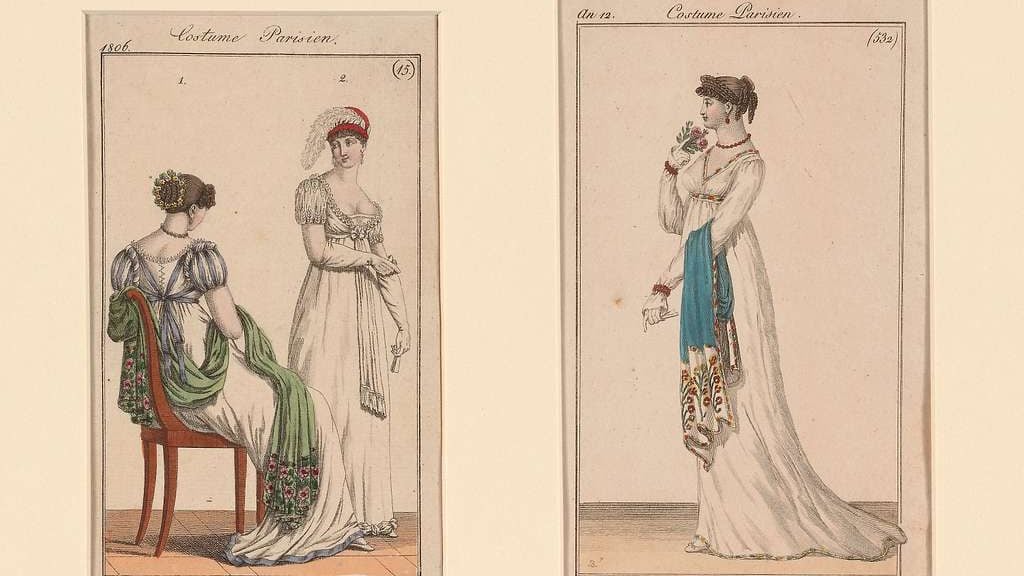The recent release of the first part of hit Netflix show Bridgerton’s third season has once again sparked discussion about its costuming and adherence (or lack thereof) to actual Regency trends. The extravagant dresses and accessories featured in the show are undoubtedly visually appealing, however, they are often not historically accurate. While the costumes are not the most era-appropriate, many argue that the show is a fantasy loosely based on history, rather than a faithful retelling, and that the costumes are meant to appeal to modern tastes. The discourse around Bridgerton’s fashion more broadly reflects how Regency fashion is often misrepresented on screen for narrative or aesthetic reasons.
The Regency era most often refers to the time in British history between the late 1700s and the early 1800s. What Bridgerton gets right about fashion in this era is the silhouettes. The empire waistline was the predominant style, and this is reflected on the screen. The cropped jackets that have become synonymous with Kate Sharma’ style are also surprisingly historically accurate. These jackets are known as a Spencer and were adapted from and inspired by the menswear at the time.
Despite the accuracy in terms of silhouette, many crucial items are missing from the wardrobe of the Bridgerton ton. One of these is the chemisette, which was used to give coverage to the front and neckline of dresses. These garments would give the appearance of a shirt or blouse underneath a dress without adding unnecessary bulk. The necklines in Bridgerton would not adhere to the modesty norms of the Regency era. Apart from being more in line with modern fashion, these necklines serve a narrative purpose. This is most evident in the most recent reason. The main character of season three, Penelope Featherington, is sidelined in seasons one and two. In season three, she reinvents herself in order to move more into the spotlight of society. One major way she does this is through her wardrobe. An obvious change that the costuming department made was to the fit of her dresses around the waist and neckline. The more tailored fit in season three is noticeable partly due to the lack of additional garments obstructing the neckline. The better tailoring of Penelope’s dresses in season three makes her look more put together, thus contributing to her narrative arc for the season.
Another important Regency accessory missing from the show is the bonnet. This is the most often neglected item of clothing in on screen representations of the Regency era, even though it was such a wardrobe staple at the time. However, this makes sense for media targeted to modern audiences. Nicely styled, glossy hair is a marker of beauty in contemporary society, and hair is better captured on camera when not obstructed by anything. While the decision to not include bonnets in the show’s costuming is understandable, it is a shame as they are so paramount to Regency fashion and can be used to make outfits complete.
The colours used in the show are also far from historically accurate. Bright colours were not staples of the Regency era, yet multiple characters on the show, like the entire Featherington family, are defined by the flashy colours they wear. This too, seems like an intentional storytelling technique, rather than an oversight. The Featheringtons wear extravagant hues due to their desire to be noticed, and also as a way to distract from their poor financial standing. Each family in Bridgerton has their own colour scheme reflective of their personality, and this subtle symbolism would not be possible if all of the costumes used colours faithful to the Regency era.
Fictional media set in Regency England does not always need to be truly faithful to historical fashion because the time period and its silhouette is so recognisable that it can be immediately identified when seen on screen. This gives shows like Bridgerton room to be creative in the way they use their costuming for symbolism and propagating the plot, which has been very clearly demonstrated in the latest season of the Netflix show.


